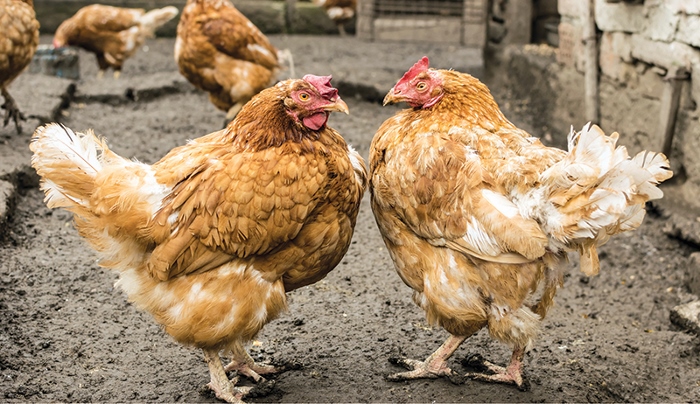Most of us usually underestimate chicken intelligence. They are not as clueless or ‘bird-brained’ as people believe them to be. We know that chickens have distinct personalities and can outmanoeuvre one another. They know their place in the pecking order. Chickens can even reason by deduction, which is an ability that humans develop by the age of seven. Yet chicken intelligence is overshadowed by other bird groups.
The SA Smallholder has examined the fact that chickens have a complex system of communication, with more than 24 vocalizations, each with a different meaning. They even communicate with their mothers while they are still in the egg.
Hens actively teach their young skills such as foraging and avoiding predators. Chicks learn alarm calls from the mother hen, an important lesson as they stray farther from her side. They also learn through observation, not only of their mother but of other chicks and other adult chickens.
Chickens have a knack for remembering people, places, and things, even after months apart. Within the flock, the ability to discriminate among individuals forms the basis for social relationships, hierarchies, and reactions to familiar versus unfamiliar individuals. Not only do chickens recognize who is and is not a member of their social group, but they differentiate individuals within their own group.
Chickens Know About Time
Chickens perceive time intervals. They interpret the movement of the sun and changes in light.
Tests have shown that they have the ability to travel backwards in time and recollect specific past events, which is called episodic memory and that they can anticipate future events. Chickens plan ahead and take into account prior experience and knowledge of a situation.
They can also anticipate the future and exhibit self-control. In one study, chickens discovered that if they did not eat immediately, but waited before they pecked, they would be rewarded by a much larger amount of food.
Research has shown that chickens have some sense of numbers. We know that mother hens know how many chicks they have. Further to that though, experiments with newly hatched domestic chicks showed they can discriminate between quantities. They also have an idea about ordinality, which refers to the ability to place quantities in a series. Five-day-old domestic chicks presented with two sets of objects of different quantities disappearing behind two screens were able to successfully track which one hid the larger number by apparently performing simple arithmetic in the form of addition and subtraction.

In another test, 5-day-old chicks showed off their ability to identify a target based on its numerical place in a series of 10. Researchers put the young birds put in front of a row of identical holes, one of which contained food. When the apparatus was rotated, they were still able to return to the designated hole.
Chicken Intelligence Shows
In one clicker-training program, chickens were taught to consistently peck at one of four unique geometric shapes, even if the order of shapes changed. When the target shape was removed, they waited to peck, demonstrating that they had recognised the shapes.
Other research has shown that hens put geometry into action as they seemingly predict where grasshoppers are going to land when hunting them. They don’t run to catch the grasshopper in flight. In fact they rather run to where it’s going to land, which is a pretty complex calculation.
Cockerels use vocalisation and actions to indicate to hens that they have found food. The subordinate cocks do not want to draw the unwelcome attention of the dominant cock in the flock. Instead they will only go through the actions, which involves picking up and dropping the food morsel repeatedly, without making the sound. Sometimes a cheeky cockerel will call or go through the motions even when there is no food, in the hope that the girls will come running. However, the females develop counter-strategies and eventually stop responding to males who call too often in the absence of food.
And there we were thinking that they are a bunch of birdbrains!
To read more about poultry click here.
To subscribe to SA Smallholder click here.

